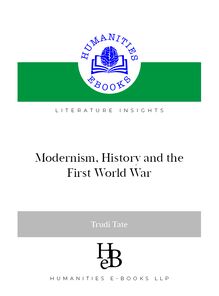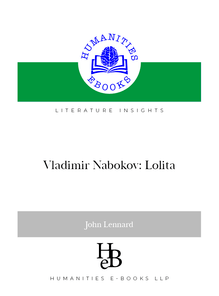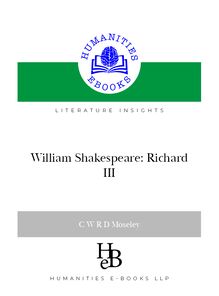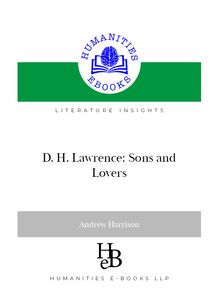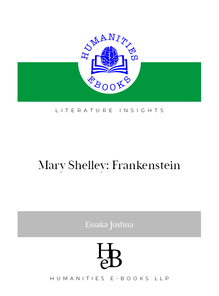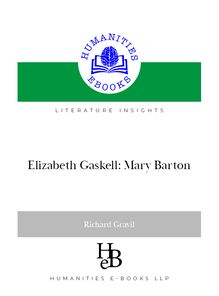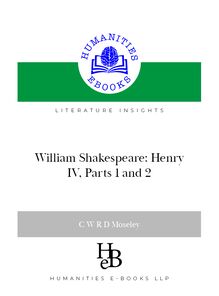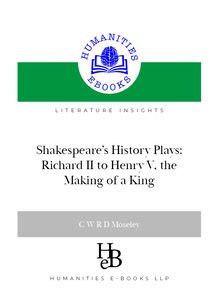-
 Univers
Univers
-
 Ebooks
Ebooks
-
 Livres audio
Livres audio
-
 Presse
Presse
-
 Podcasts
Podcasts
-
 BD
BD
-
 Documents
Documents
-
- Cours
- Révisions
- Ressources pédagogiques
- Sciences de l’éducation
- Manuels scolaires
- Langues
- Travaux de classe
- Annales de BEP
- Etudes supérieures
- Maternelle et primaire
- Fiches de lecture
- Orientation scolaire
- Méthodologie
- Corrigés de devoir
- Annales d’examens et concours
- Annales du bac
- Annales du brevet
- Rapports de stage
La lecture à portée de main
199 pages
English
Découvre YouScribe en t'inscrivant gratuitement
Je m'inscrisGrasmere 2012: Selected Papers from the Wordsworth Summer Conference , livre ebook
Découvre YouScribe en t'inscrivant gratuitement
Je m'inscris
Obtenez un accès à la bibliothèque pour le consulter en ligne
En savoir plus
En savoir plus
199 pages
English
Obtenez un accès à la bibliothèque pour le consulter en ligne
En savoir plus
En savoir plus

Description
Grasme re 2012 Selected Papers from the Wordsworth Summer Conference compiled by compiled by Richard Gravil Richard Gravil HEBƁFOR ADVICE ON THE USE OF THIS EBOOK PLEASE SCROLL TO PAGE 2 Using this Ebookt *7KLV ERRN LV GHVLJQHG WR EH UHDG LQ VLQJOH SDJH YLHZ XVLQJ WKH µ¿W page’ command. *To navigate through the contents use the hyperlinked ‘Bookmarks’ at the left of the screen. *To search, click the search symbol. *For ease of reading, use to enlarge the page to full screen, and return to normal view using . *Hyperlinks (if any) appear in Blue Underlined Text. Permissions Your purchase of this ebook licenses you to read this work on-screen. You may print a copy of the book for your own use but copy and paste functions are disabled. No part of this publication may be otherwise reproduced or transmitted or distributed without the prior written permission of both the copyright owner and the publisher. Making or distributing copies of this book would constitute copyright infringement and would be liable to prosecution. Thank you for respecting the rights of the author.
Sujets
Informations
| Publié par | Humanities eBooks |
| Date de parution | 11 janvier 2021 |
| Nombre de lectures | 0 |
| EAN13 | 9781847602350 |
| Langue | English |
| Poids de l'ouvrage | 5 Mo |
Informations légales : prix de location à la page 0,0398€. Cette information est donnée uniquement à titre indicatif conformément à la législation en vigueur.
Extrait
Grasmere 2012 Selected Papers from the Wordsworth Summer Conference
compiled by compiled by Richard Gravil Richard Gravil
HEB☼FOR ADVICE ON THE USE OF THIS EBOOK PLEASE SCROLL TO PAGE 2
Using this Ebookt
*This book is designed to be read in single page view, using the ‘ît page’ command. *To navigate through the contents use the hyperlinked ‘Bookmarks’ at the left of the screen. *To search, click the search symbol. *For ease of reading, use <CTRL+L> to enlarge the page to full screen, and return to normal view using < Esc >. *Hyperlinks (if any) appear in Blue Underlined Text.
Permissions
Your purchase of this ebook licenses you to read this work on-screen.
You may print a copy of the book for your own use but copy and paste functions are disabled.
No part of this publication may be otherwise reproduced or transmitted or distributed without the prior written permission of both the copyright owner and the publisher.
Making or distributing copies of this book would constitute copyright infringement and would be liable to prosecution. Thank you for respecting the rights of the author.
Grasmere, 2012
Selected Papers from The Wordsworth Summer Conference compiled by Richard Gravil on behalf of The Wordsworth Conference Foundation HEB☼Humanities-Ebooks, LLP
© he Wordswort Conference Foundation, 2012 Copyrigt is asserted by te Foundation on bealf of te contributing autors wo retain all rigts of furter publication. First publised byHumanitiesEbooks, LLP, Tirril Hall, Tirril, Penrit CA10 2JE Cover images © Jason Goldsmit
Front:Detail from Lingmoor Fell from Windermere(from Figure 9 in te last essay in te collection). Back: Figures 12 and 13 repeated. he Pdf Ebook is available to individual purcasers exclusively from ttp://www.umanities-ebooks.co.ukand can be supplied to libraries by EBSCO, Ebrary and MyiLibrary. he paperback is available exclusively fromLulu.com ISBN 978-1-84760-235-0 PDF Ebook ISBN 978-1-84760-236-7 Paperback ISBN 978-1-84760-237-4 Kindle Ebook
Contents
Foreword Heather Glen ‘We are seven’ in the 1790s Judyta Frodyma Lowth, Landscape, and Biblical Echoes in Wordsworth’s ‘Home at Grasmere’ Pamela Woof Dorothy Wordsworth, Writer: the Middle Years Suzanne Stewart A Finely-Tuned Instrument: Dorothy Wordsworth and Synaesthetic Experience Judith W. Page ‘The Lonely Hills’: Beatrix Potter, William Wordsworth, and the Lakeland Landscape Heidi Thomson The Lyric Power of Connection in Wordsworth’s ‘Poem upon the Wye’ and Auden’s ‘In Praise of Limestone’ Anthony John Harding ‘Contempt for the Reading Public’? – Coleridge, Wordsworth, and the Book Business Peter Swaab ‘The Poet and the Poetical Artist’: Sara Coleridge as a Critic of Wordsworth’ Paul Whickman FromLaon and CythnatoThe Revolt of Islam: Shelley’s Revisions in Context.
3
4
7
8
4
5
6
8
8
7
104
113
130
147
6
Grasmere, 2012
Catherine Redford The Last Man and Romantic Archaeology 160 Stacey McDowell Keats’s ‘Ode on Indolence’ 171 Jason Goldsmith Re-Drawing the Borders of Vision; or, The Art of Picturesque Travel 182
Foreword
This peer-reviewed selection of lectures and papers is the îfth such to be published on behalf of the Wordsworth Conference Foundation.
All îve books are available in paperback from Lulu.com, and in PDF from Humanities-Ebooks.co.uk, or from MyiLibrary, EBSCO and Ebrary, to libraries.
This collection will also be available from Amazon in Kindle format, though of course without quite the same layout that is possible in PDF and print form (the illustrations will suffer in this format), and with endnotes rather than footnotes.
Richard Gravil,1 December 2012
Heather Glen
‘We are seven’ in the 1790s
‘We are seven’ is perhaps the most famous, or notorious, of all Wordsworth’sLyrical Ballads.It is apparently very simple; but it has always been controversial. A close friend (James Tobin, the ‘Jim’ of the îrst stanza), who saw it as the volume was going to press, advised Wordsworth to withdraw it, ‘for, if published, it will 1make you everlastingly ridiculous’. But ‘We are seven’ was quickly singled out for approval.‘It will be a very fastidious reader that will deny it has beauty and feeling,’ pronounced one of the îrst reviewers 2 ofLyrical Balladsin 1799. In April, 1800 it appeared (unsigned) in a London daily newspaper, with a note that described its author as 3 ‘one of the îrst poets of the age’. This was the poem that îrst îred admiration of Wordsworth in fourteen-year-old Thomas de Quincey; that John Clare recalled seeing hawked about as a penny ballad—one 4 of ‘the pieces of the living poets’ that ‘have attained a common fame’. Throughout the nineteenth century, it was repeatedly anthologized, sentimentalized by Victorian illustrators, and appropriated for edifying purposes, especially collections on the deaths of children. It was much reprinted in school readers, and it became very popular as an elocution piece. ‘I constantly hear little children, by order of their parents, repeating “We are seven”,’ reported a reviewer of reading-5 books for children in 1839. The American writer Frances Miriam
1 Jared R. Curtis,The Fenwick Notes of William Wordsworth(rev.ed., Humanities Ebooks, 2007), 43. 2The British Critic4, 1799, 367. 3Courier, 7 April 1800. In the same month the poem was copied to theDerby Mercuryand theLady’s Magazine. 4 John E. Jordan,De Quincey to Wordsworth: Biography of a Relationship(Berkeley: University of California Press, 1962), 36; [John Clare], ‘Popularity in Authorship’,European Magazinen.s.1 (1825), 301. 5The Educational Magazine, and Journal of Scholastic Literature2 (1839), 399. David Masson, inEssays Biographical and Critical; Chiey on English Poets(Cambridge, 1856), speaks of the poem’s continuing popularity as a recita-
Heather Glen
9
Berry, born in 1811, was said to have recited it accurately ‘when only 1 two years old—yet ignorant of A B C’. ‘Many of those little ballads the world now has by heart. Others it will learn as it grows humbler and holier,’ prophesied an American review in 1857. ‘The little child in “We are Seven,” has led many a strong man into the sentiments of 2 his earlier, better days.’ But ‘We are seven’ has also had another kind of after-life. It was, as de Quincey reported, ‘often ridiculed’, even by Wordsworth’s admir-ers. The simple ballad form and refrain-like repetition that made it easy to learn by heart made it also peculiarly susceptible to parody. In 1801, theMonthly Mirror, quoting the whole of ‘We are seven’ as a ‘sweetly-simple dialogue’, warned that the poem might also provoke ‘sentiments even of the ludicrous’:
Certain phrases and epithets in the preceding stanzas will be liable to this unfortunate perversion, with those whose mental associations will carry them back to the nursery, who cherish fancy more than feeling, and who prefer a witless parody to a 3 composition that meliorates the heart.
True to this prediction, there were early parodies by Scott and Byron, and in Blackwood’sNoctes Ambrosianae. These were to be followed by numerous others, sometimes with illustrations, throughout the nineteenth century and beyond, most making comic play with the unresolved stand-off between the two speakers, and nonsense of the 4 girl’s repeated words. The most famous of these is, indeed, wordless:
tion piece (381). On learning by heart in the nineteenth century, see Catherine Robson,Heart Beats: Everyday Life and the Memorized Poem(Princeton: Princeton University Press, 2012). 1 John Seeley Hart,The Female Prose Writers of America(Philadelphia, 1857), 498. David Masson, inEssays Biographical and Critical; Chiey on English Poets(Cambridge, 1856), speaks of the poem’s continuing popularity as a reci-tation piece (381). On learning by heart in the nineteenth century, see Catherine Robson,Heart Beats: Everyday Life and the Memorized Poem(Princeton: Princeton University Press, 2012). 2Methodist Quarterly Review9 (1857), 374. 3Monthly Mirror11 (1801), 389–92. 4 ‘Malachi Malagrowther’ [Walter Scott],A Second Letter to the Editor of the Edinburgh Weekly Journal(Edinburgh, 1826), 10; Thomas Medwin, Conversations of Lord Byron, noted during a Residence with his Lordship at Pisa in the Years 1821 and 1822(London, 1824), 237–8;Noctes Ambrosianae,
10
Grasmere, 2012
Max Beerbohm’s depiction of ‘William Wordsworth in the Lake District, at Cross-Purposes’ in his volumeThe Poet’s Corner(1904), where the encounter of ‘We are seven’ is stylized as one between an elderly Wordsworth-îgure (rather like the later Wordsworth of Canon Rawnsley’s account) and a strangely bonnetted child. ‘We are seven’ has proved oddly compelling to its readers, and in markedly divergent ways. On the one hand, many have found the poem ‘charming’ (the word recurs in accounts of it); its lines and phrases ‘înd their way into the heart’. On the other, it has evidently had a much more irritating memorability—one that the parodies sug-gest is centred on its unresolved drama of insistence and resistence, the speaker’s reiterated question and the child’s stubborn repetition of a strangely opaque phrase. On the one hand, it has seemed to speak of common humanity, on the other, of radical difference, of a coun-ter-perspective that challenges authority and consensus, and even rationality. There is something about this poem that seems to have prompted its readers into repeated attempts to make either ‘sense’ or ‘nonsense’ of it. Indeed, the îrst such attempt was arguably made on the day on which ‘We are seven’ was composed. Thus Wordsworth recalled it years later in a Fenwick note:
I composed it while walking in the grove of Alfoxden. My friends will not deem it too triing to relate that while walking to and fro I composed the last stanza îrst, having begun with the last line. When it was all but înished, I came in and recited it to Mr. Coleridge and my Sister, and said, “A prefatory Stanza must be added, and I should sit down to our little tea-meal with greater pleasure if my task were înished.” I mentioned in sub-stance what I wished to be expressed, and Coleridge immedi-ately threw off the stanza thus:— “A little Child, dear brother Jem,”—. I objected to the rhyme, “dear brother Jem”, as being ludicrous, but we all enjoyed the joke of hitching-in our friend, 1 James T—’s name, who was familiarly called Jem.
62. On later parodies, see Philip Connell, ‘How to popularize Wordsworth’, in Philip Connell and Nigel Leask, eds.,Romanticism and Popular Culture in Britain and Ireland(Cambridge: Cambridge University Press, 2009), 270. 1Fenwick Notes, ed. Curtis, 42.
-
 Univers
Univers
-
 Ebooks
Ebooks
-
 Livres audio
Livres audio
-
 Presse
Presse
-
 Podcasts
Podcasts
-
 BD
BD
-
 Documents
Documents
-
Jeunesse
-
Littérature
-
Ressources professionnelles
-
Santé et bien-être
-
Savoirs
-
Education
-
Loisirs et hobbies
-
Art, musique et cinéma
-
Actualité et débat de société
-
Jeunesse
-
Littérature
-
Ressources professionnelles
-
Santé et bien-être
-
Savoirs
-
Education
-
Loisirs et hobbies
-
Art, musique et cinéma
-
Actualité et débat de société
-
Actualités
-
Lifestyle
-
Presse jeunesse
-
Presse professionnelle
-
Pratique
-
Presse sportive
-
Presse internationale
-
Culture & Médias
-
Action et Aventures
-
Science-fiction et Fantasy
-
Société
-
Jeunesse
-
Littérature
-
Ressources professionnelles
-
Santé et bien-être
-
Savoirs
-
Education
-
Loisirs et hobbies
-
Art, musique et cinéma
-
Actualité et débat de société
- Cours
- Révisions
- Ressources pédagogiques
- Sciences de l’éducation
- Manuels scolaires
- Langues
- Travaux de classe
- Annales de BEP
- Etudes supérieures
- Maternelle et primaire
- Fiches de lecture
- Orientation scolaire
- Méthodologie
- Corrigés de devoir
- Annales d’examens et concours
- Annales du bac
- Annales du brevet
- Rapports de stage
Signaler un problème
YouScribe
Le catalogue
Le service
© 2010-2024 YouScribe
